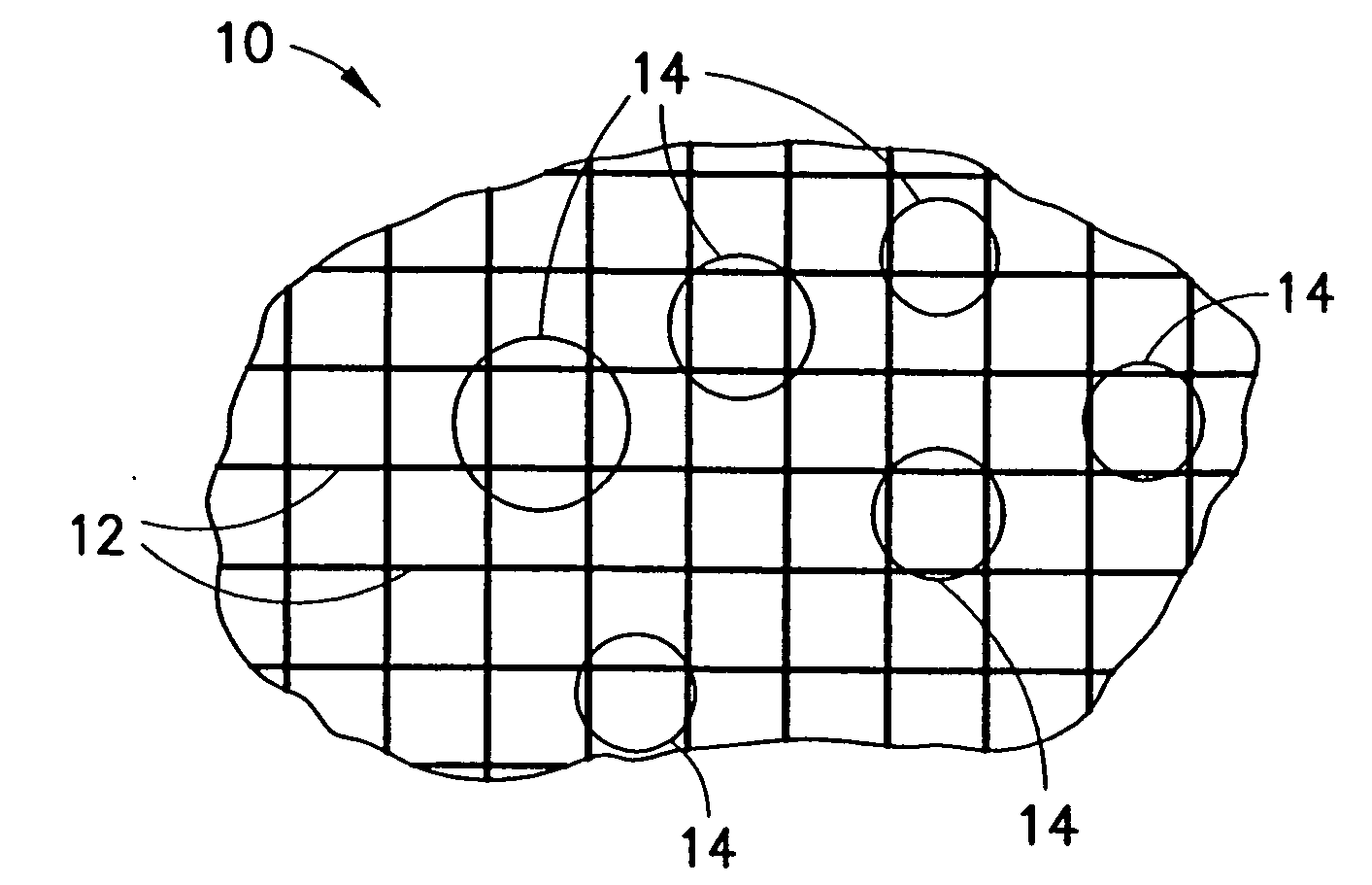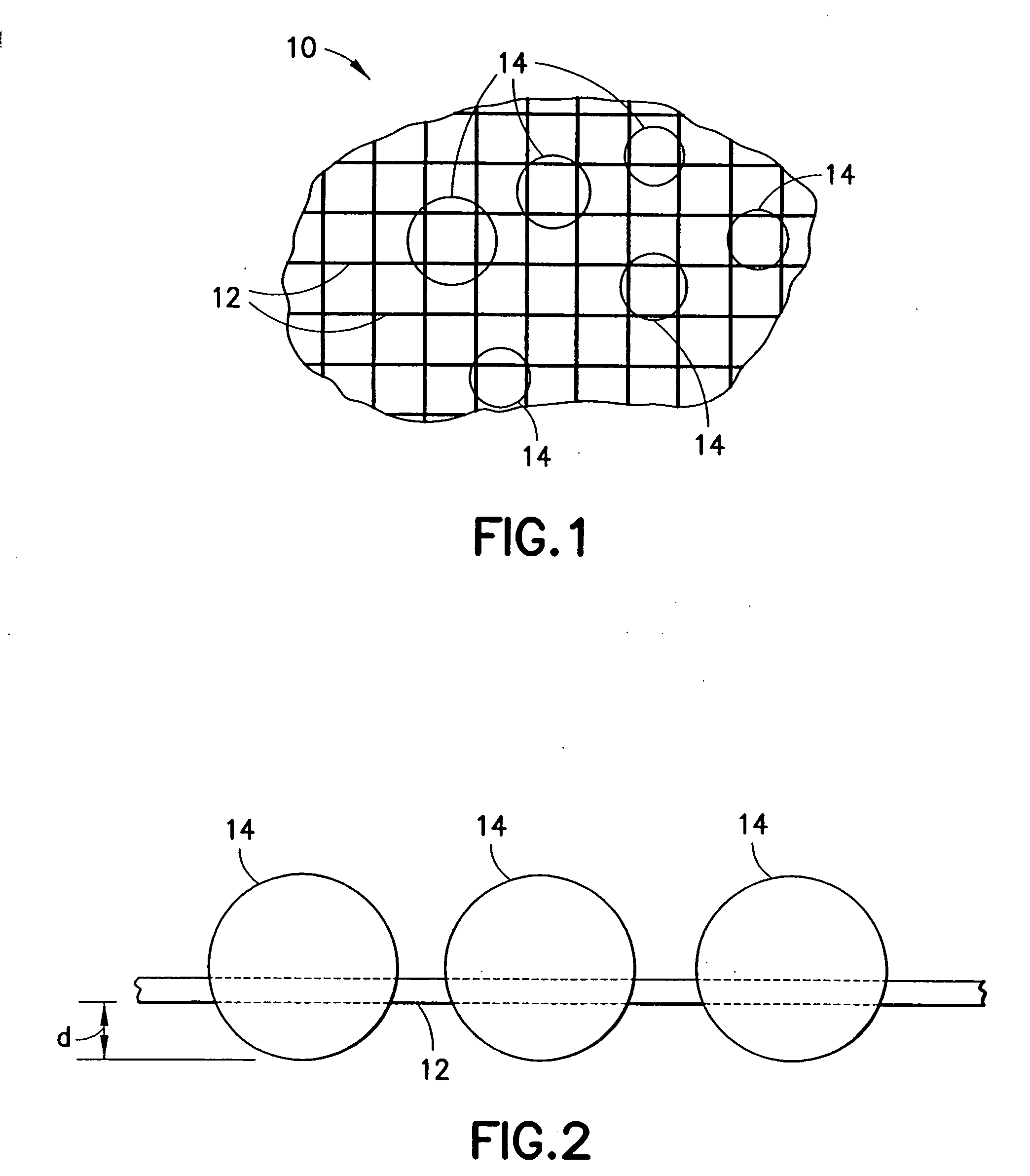Heat mitigating hemostatic agent
a technology of hemostasis and hemostasis, which is applied in the field of hemostasis-promoting devices, can solve the problems of insufficient immediate availability of equipment and trained personnel, insufficient stanchions of blood flow, and excessive bleeding, and achieves the effects of convenient application to open wounds, convenient clotting of blood, and convenient clotting
- Summary
- Abstract
- Description
- Claims
- Application Information
AI Technical Summary
Benefits of technology
Problems solved by technology
Method used
Image
Examples
Embodiment Construction
[0023]Disclosed herein are hemostatic devices and hemostatic agents that are applicable to bleeding wounds to promote hemostasis. The hemostatic agents generally include quantities of particles having hemostatic qualities, such particles being contained within mesh bags, perforated containers, or similar devices that, when brought into contact with a bleeding wound, can minimize or stop blood flow by absorbing at least portions of the liquid phases of the blood, thereby facilitating clotting. Each particle includes a mixture of both a molecular sieve material component and a binder component. The particles are not limited to two-component mixtures, however, as other materials (e.g., anti-infective agents and the like) may be included as third or subsequent components.
[0024]In one preferred embodiment, the molecular sieve material is a zeolite and the binder component is a material having hemostatic properties. The devices and agents disclosed herein are not limited to zeolites, howe...
PUM
 Login to View More
Login to View More Abstract
Description
Claims
Application Information
 Login to View More
Login to View More - R&D
- Intellectual Property
- Life Sciences
- Materials
- Tech Scout
- Unparalleled Data Quality
- Higher Quality Content
- 60% Fewer Hallucinations
Browse by: Latest US Patents, China's latest patents, Technical Efficacy Thesaurus, Application Domain, Technology Topic, Popular Technical Reports.
© 2025 PatSnap. All rights reserved.Legal|Privacy policy|Modern Slavery Act Transparency Statement|Sitemap|About US| Contact US: help@patsnap.com



